
The Italian Grand Prix is the fifth oldest national Grand Prix, having been held since 1921. In 2013 it became the most held Grand Prix. It is one of the two Grands Prix which has run as an event of the Formula One World Championship Grands Prix every season, continuously since the championship was introduced in 1950. Every Formula One Italian Grand Prix in the World Championship era has been held at Monza except in 1980, when it was held at Imola.

The 1957 Pescara Grand Prix was a Formula One motor race, held on 18 August 1957, at the Pescara Circuit near Pescara in Italy. The race was the 7th round of the 1957 World Championship of Drivers. The 25.579 km (15.894 mi) circuit is the longest to ever hold a world championship race in Formula One. The race was the first and only Formula One World Championship race to take place at the track. It was also the first of two consecutive Italian races, which meant that it was the first time that the same country had held two Formula One World Championship races in the same season.
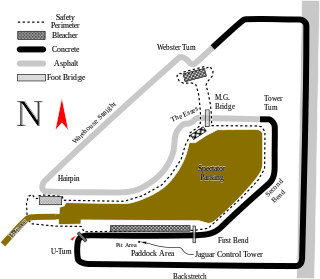
The 1959 United States Grand Prix was a Formula One motor race held on December 12, 1959, at Sebring International Raceway in Sebring, Florida. It was the last of 9 races in the 1959 World Championship of Drivers and the 8th and final in the 1959 International Cup for Formula One Manufacturers.It was the second United States Grand Prix, and the only occasion the race was held at the home of the 12 Hours of Sebring endurance sports car race, the Sebring International Raceway in Florida. The race was held over 42 laps of the 8.36-kilometre circuit for a total race distance of 351 kilometres.
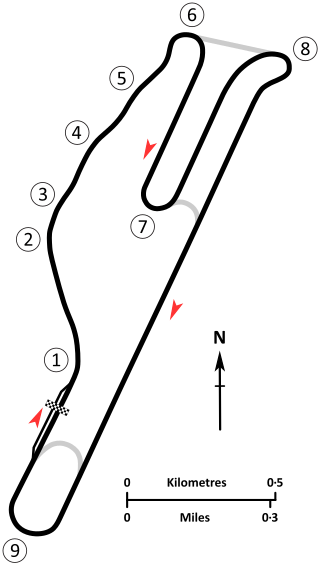
The 1960 United States Grand Prix was a Formula One motor race held on November 20, 1960, at Riverside International Raceway in Riverside, California. It was race 10 of 10 in the 1960 World Championship of Drivers and race 9 of 9 in the 1960 International Cup for Formula One Manufacturers.

The 1961 Dutch Grand Prix was a Formula One motor race held on 22 May 1961 at Zandvoort. It was race 2 of 8 in both the 1961 World Championship of Drivers and the 1961 International Cup for Formula One Manufacturers.
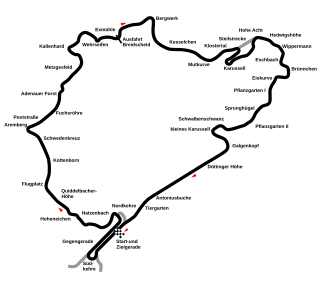
The 1961 German Grand Prix was the 23rd time the German Grand Prix motor race was held. The race also held the honorary designation of the 21st European Grand Prix. It was run to Formula One regulations as race 6 of 8 in both the 1961 World Championship of Drivers and the 1961 International Cup for Formula One Manufacturers It was held on 6 August 1961 over 15 laps of the giant 14.2 mile Nürburgring Nordschleife circuit for a race distance of almost 213 miles. The race also celebrated the 100th race since the establishment of the World Championship in 1950.
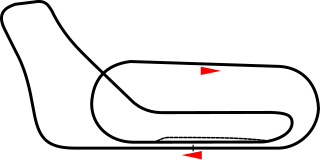
The 1961 Italian Grand Prix was a Formula One motor race held on 10 September 1961 at Monza. It was race 7 of 8 in both the 1961 World Championship of Drivers and the 1961 International Cup for Formula One Manufacturers.
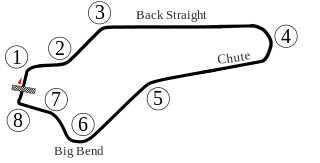
The 1961 United States Grand Prix was a Formula One motor race held on October 8, 1961, at the Watkins Glen Grand Prix Race Course in Watkins Glen, New York. It was the eighth and final race in both the 1961 World Championship of Drivers and the 1961 International Cup for Formula One Manufacturers.

The 1961 Formula One season was the 15th season of Formula One motor racing. It featured the 1961 World Championship of Drivers and the 1961 International Cup for F1 Manufacturers, which were contested concurrently from 14 May to 8 October over an eight race series. The season also included numerous non-championship races for Formula One cars.
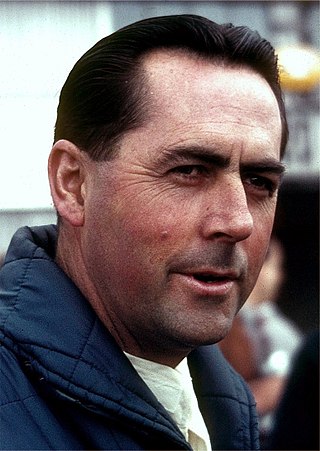
The 1960 Formula One season was the 14th season of the FIA's Formula One motor racing. It featured the 11th FIA World Championship of Drivers, the third International Cup for F1 Manufacturers and numerous non-championship Formula One races. The World Championship commenced on 7 February and ended on 20 November after ten races.
The 1958 Formula One season was the 12th season of Formula One motor racing. It featured the 1958 World Championship of Drivers, which commenced on 19 January 1958 and ended on 19 October after eleven races. This was the first Formula One season in which a manufacturers title was awarded, the International Cup for F1 Manufacturers being contested concurrently with the World Championship of Drivers except the Indianapolis 500 which did not count towards the Cup. Englishman Mike Hawthorn won the Drivers' title after a close battle with compatriot Stirling Moss and Vanwall won the inaugural Manufacturers award from Ferrari. Hawthorn retired from racing at the end of the season, only to die three months later after a road car accident. It was the first of only two occasions in Formula One history where a driver won the championship, having won only one race in the season, the other being Keke Rosberg in 1982.
The 1957 Formula One season was the 11th season of FIA Formula One motor racing. It featured the 1957 World Championship of Drivers, which commenced on 13 January 1957 and ended on 8 September after eight races. Juan Manuel Fangio won his fourth consecutive title, his fifth in total, in his final championship. A feat that would not be beaten until Michael Schumacher in 2003. The season also included numerous non-championship races for Formula One cars.

Wolfgang Alexander Albert Eduard Maximilian Reichsgraf Berghe von Trips, also known simply as Wolfgang Graf Berghe von Trips and nicknamed 'Taffy' by friends and fellow racers, was a German racing driver. He was the son of a noble Rhineland family.

Paul Richard "Richie" Ginther was a racecar driver from the United States. During a varied career, the 1965 Mexican Grand Prix saw Ginther take Honda's first Grand Prix victory, a victory which would also prove to be Ginther's only win in Formula One. Ginther competed in 54 World Championship Formula One Grand Prix races and numerous other non-Championship F1 events.
Charles Anthony Standish Brooks was a British racing driver also known as the "Racing Dentist". He participated in 39 Formula One World Championship Grands Prix, competing for the first time on 14 July 1956, and achieved six wins, 10 podium finishes and 75 career points. He was third in the World Drivers' Championship in 1958 with Vanwall and second in 1959 with Ferrari. He also scored the first win by a British driver in a British car in a Grand Prix since 1923, driving a Connaught at Syracuse in 1955 in a non-championship race.

The 1958 Moroccan Grand Prix, formally the VII Grand Prix International Automobile du Maroc, was a Formula One motor race held at Ain-Diab Circuit, Casablanca on 19 October 1958, after a six-week break following the Italian Grand Prix. It was race 11 of 11 in the 1958 World Championship of Drivers and race 10 of 10 in the 1958 International Cup for Formula One Manufacturers. It is the only time Morocco has hosted a World Championship Grand Prix.
Rob Walker Racing Team was a privateer team in Formula One during the 1950s and 1960s. Founded by Johnnie Walker heir Rob Walker (1917–2002) in 1953, the team became F1's most successful privateer in history, being the first and only entrant to win a World Championship Formula One Grand Prix without ever building their own car.

There have been 164 Formula One drivers who have represented the United Kingdom, three of whom have competed in the 2023 Formula One World Championship. Ten World Champions have driven under the UK flag. Of those, Lewis Hamilton has won the most titles, with seven putting him level with Michael Schumacher for most titles. Hamilton is still active in the sport; he has won the most races (103), recorded the most pole positions (104) and amassed the most points (4569.5) of any driver representing the UK.

There have been 58 Formula One drivers from the United States including two World Drivers' Championship winners, Mario Andretti and Phil Hill. Andretti is the most successful American Formula One driver having won 12 races, and only Eddie Cheever has started more Grands Prix.
The 1960 Formula Two season was the last season of 1.5 litre Formula Two racing which was to become Formula One for 1961. Two championships were held over the same five events, the Formula Two Constructors' Championship and the Formula Two Drivers' Championship, in addition to many non-championship Formula Two events. The Constructors' Championship was won in a draw by Cooper-Climax and Porsche, while the Drivers' Championship was won by Jack Brabham.

















